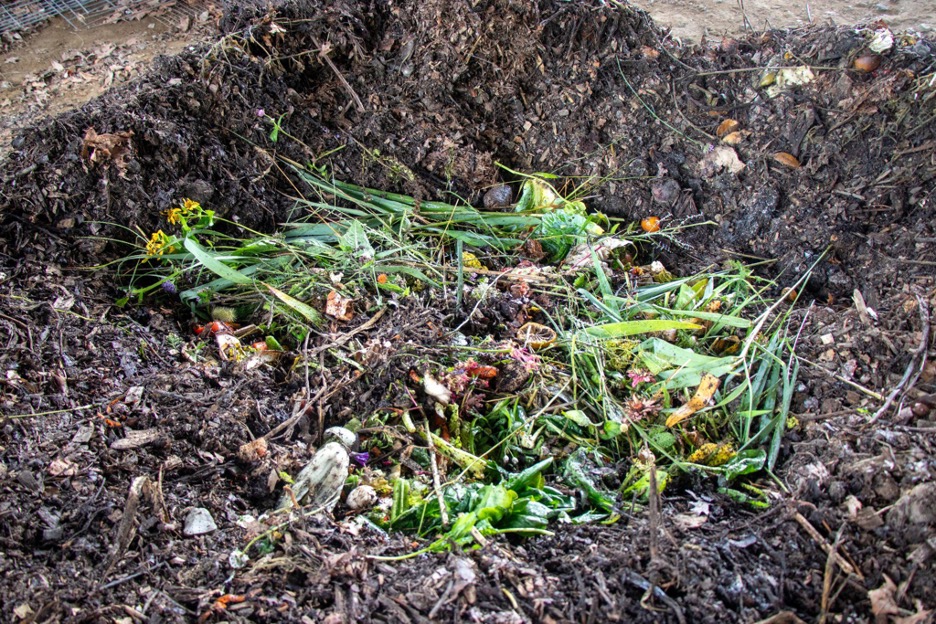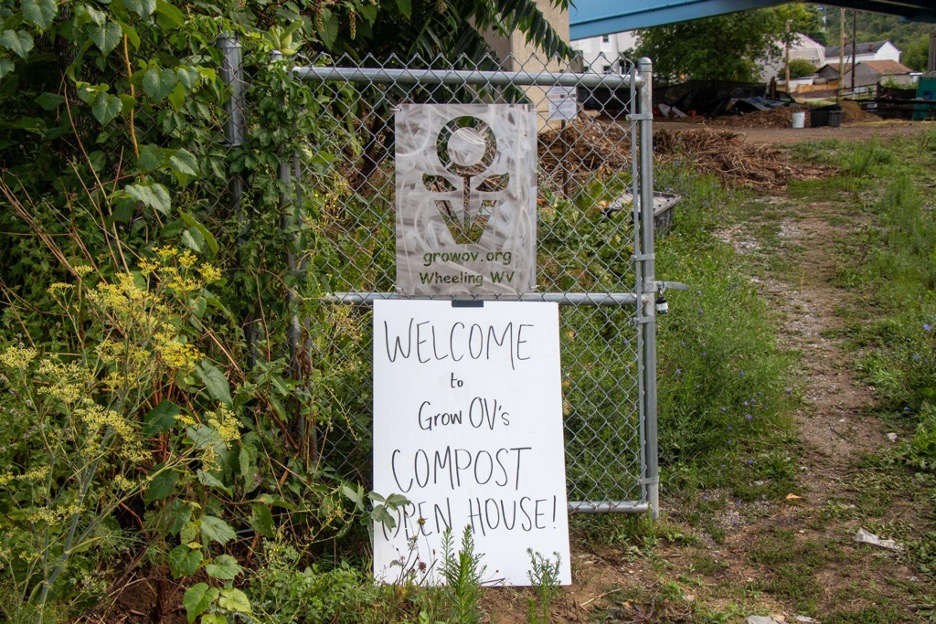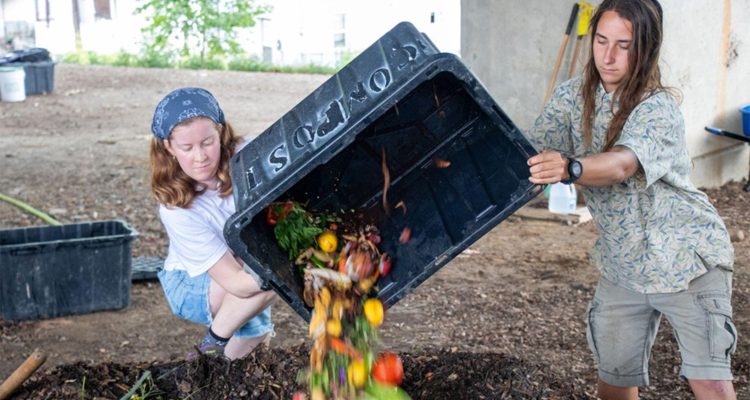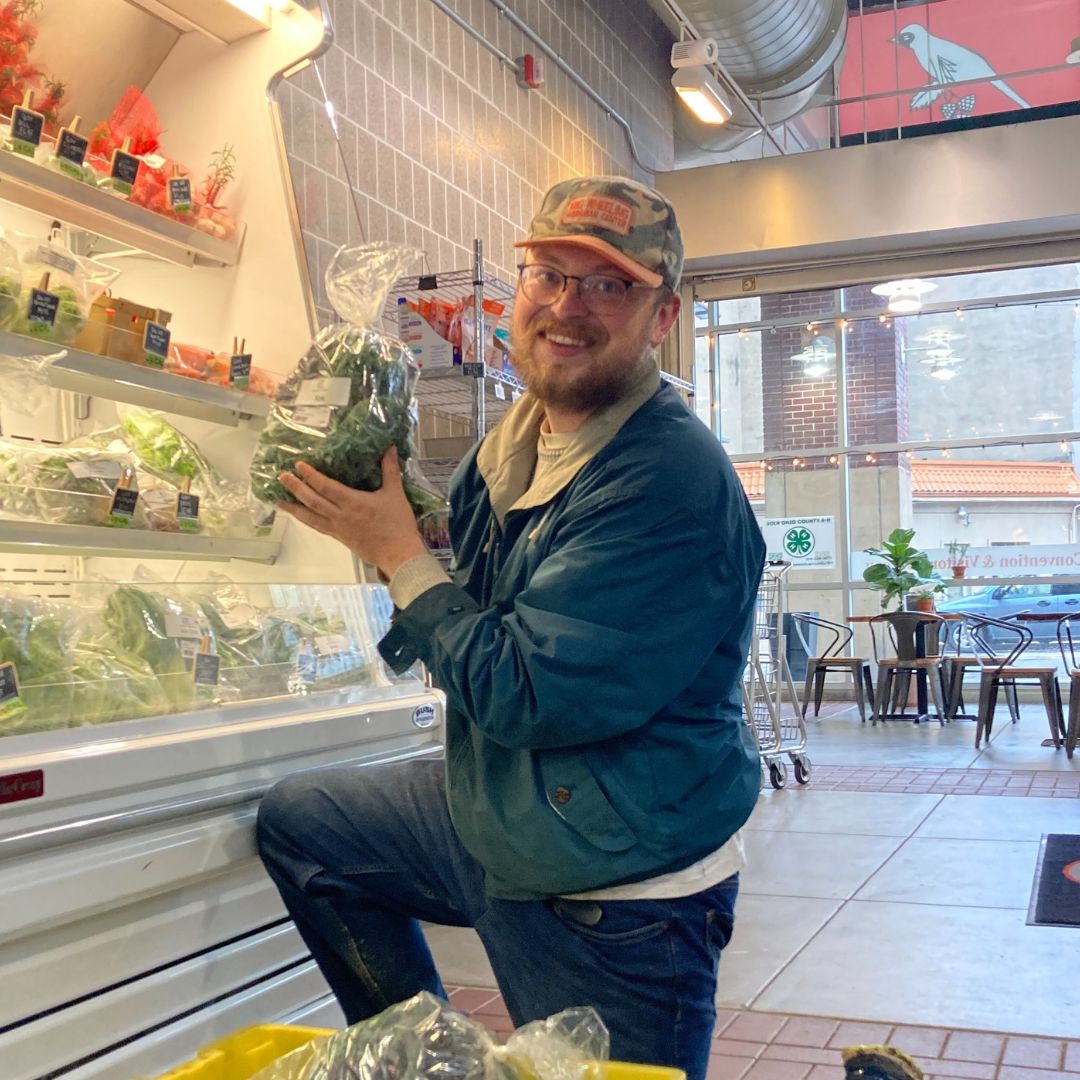Cara Delaney and Chloe Lefchak of Grow Ohio Valley have collected community kitchen scraps since June. Now that we’re nearing the end of summer, they’re getting closer to having a finished product.
Starting in May, Grow Ohio Valley has been composting its farm waste, employee food scraps, and culled produce from its Public Market. Chloe Lefchak, Americorps Program Coordinator, led the efforts at that time; however, with a desire to expand, she joined forces with AmeriCorps member Cara Delaney to offer community collection.
Beginning in June, and in tandem with the group’s community-supported agriculture (CSA) program, Delaney and Lefchak set up at the Public Market for participants to drop their kitchen scraps off. Members pay a fee from $15 to $25 to cover the cost of a collection bucket, fuel, and labor. At the end of the season, participants will receive a portion of the completed compost.
But, what is compost?
“Composting is a process of essentially recycling nutrients,” Delaney said. “We’re taking fruit and vegetable scraps which, of course, came from the ground, and we’re processing them so that they can be used as fertilizer to grow new fruits and vegetables.”

A successful compost pile strikes a balance between browns, or carbon-rich materials, and greens, or nitrogen-rich materials. Often, that ratio can be as much as 30 browns to 1 green. Browns, like leaves, woodchips, and sticks, are easily broken down when in contact with greens, like kitchen scraps, expired produce, or garden waste.
When done right, the temperature of a pile can soar to over 130 degrees. That’s where the magic really begins. At these temperatures, microorganisms begin to efficiently decompose the waste and neutralize any pathogen or weed seeds within the pile.
Delaney and Lefchak monitor their pile regularly, adding some 60 pounds of waste to it per week. Every other week, Lefchak turns the pile using a skid steer, which aerates the pile and aids the composting process.
Why not just throw waste away?
It is estimated that 50% of material that goes to the landfill could be composted. When in the landfill, this waste breaks down in an anaerobic, or oxygen-low, environment. This leads to the release of methane, a greenhouse gas 30x more potent that carbon dioxide.

In contrast, composting releases carbon dioxide and valuable, nutrient-dense fertilizer for farms, gardens, and landscapes. This amending of our soil rebuilds microbiomes that are often destroyed through conventional farming, use of pesticides, and overmowing.
“Making compost from food scraps is diverting lots of waste from the landfill,” Lefchak said. “The more waste we can divert, the better. And if you have a garden at home, or even just landscaping, being able to make your own fertilizer that’s organic is really important to keeping a healthy garden.”
As our society moves in a direction of environmental consciousness, waste diversion will become an important tool. Not only does compost release less harmful gasses than landfills, it also reduces the cost and energy expended to transport waste to landfill.
For more information about GrowOV’s composting, check out https://www.growov.org/compost.



